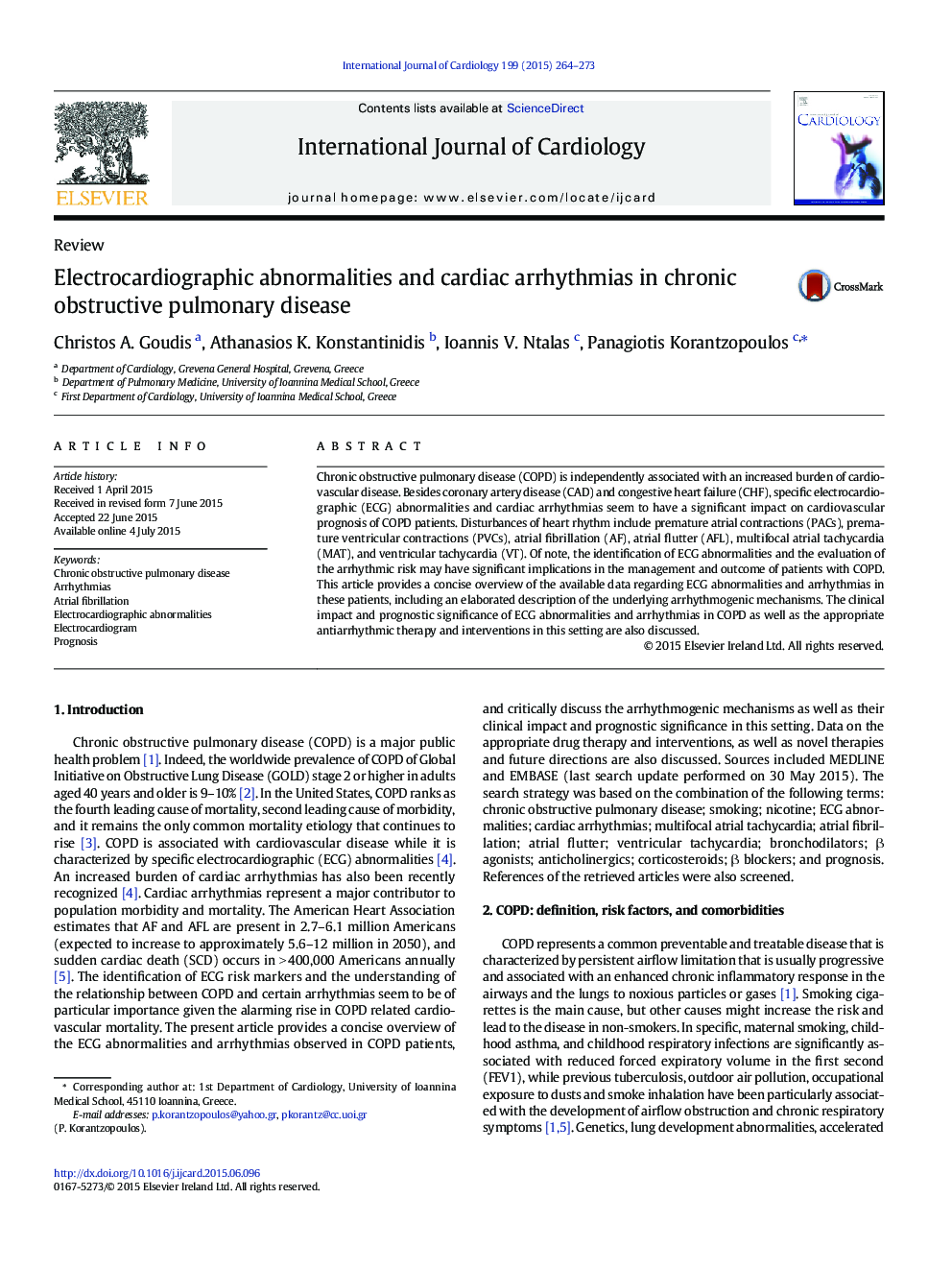| Article ID | Journal | Published Year | Pages | File Type |
|---|---|---|---|---|
| 5965819 | International Journal of Cardiology | 2015 | 10 Pages |
â¢Specific electrocardiographic abnormalities and cardiac arrhythmias are prevalent in chronic obstructive pulmonary disease.â¢The underlying pathophysiology is complex.â¢Autonomic, electrical, and structural changes play a critical role.â¢These abnormalities have an impact on cardiovascular prognosis of these patients.
Chronic obstructive pulmonary disease (COPD) is independently associated with an increased burden of cardiovascular disease. Besides coronary artery disease (CAD) and congestive heart failure (CHF), specific electrocardiographic (ECG) abnormalities and cardiac arrhythmias seem to have a significant impact on cardiovascular prognosis of COPD patients. Disturbances of heart rhythm include premature atrial contractions (PACs), premature ventricular contractions (PVCs), atrial fibrillation (AF), atrial flutter (AFL), multifocal atrial tachycardia (MAT), and ventricular tachycardia (VT). Of note, the identification of ECG abnormalities and the evaluation of the arrhythmic risk may have significant implications in the management and outcome of patients with COPD. This article provides a concise overview of the available data regarding ECG abnormalities and arrhythmias in these patients, including an elaborated description of the underlying arrhythmogenic mechanisms. The clinical impact and prognostic significance of ECG abnormalities and arrhythmias in COPD as well as the appropriate antiarrhythmic therapy and interventions in this setting are also discussed.
